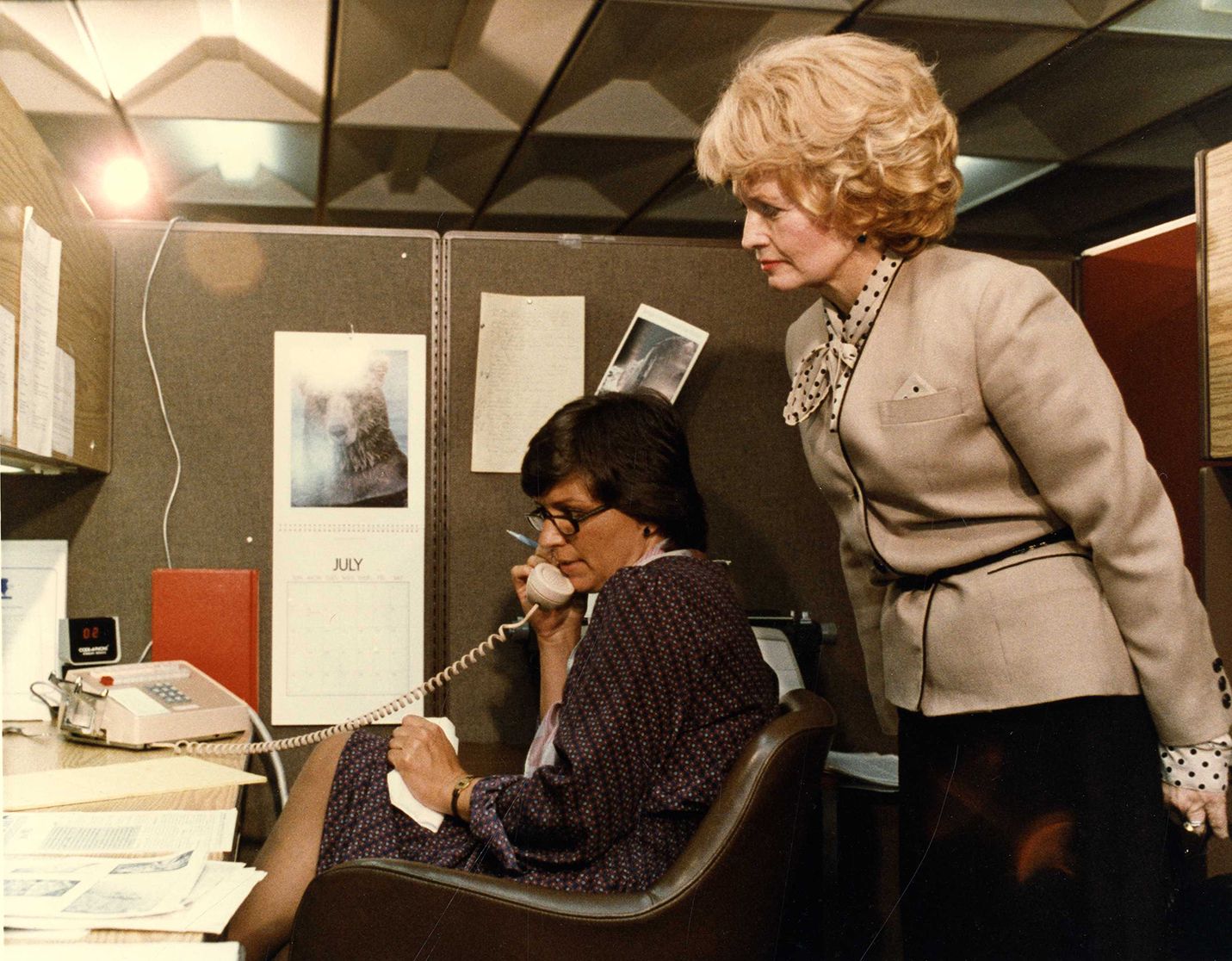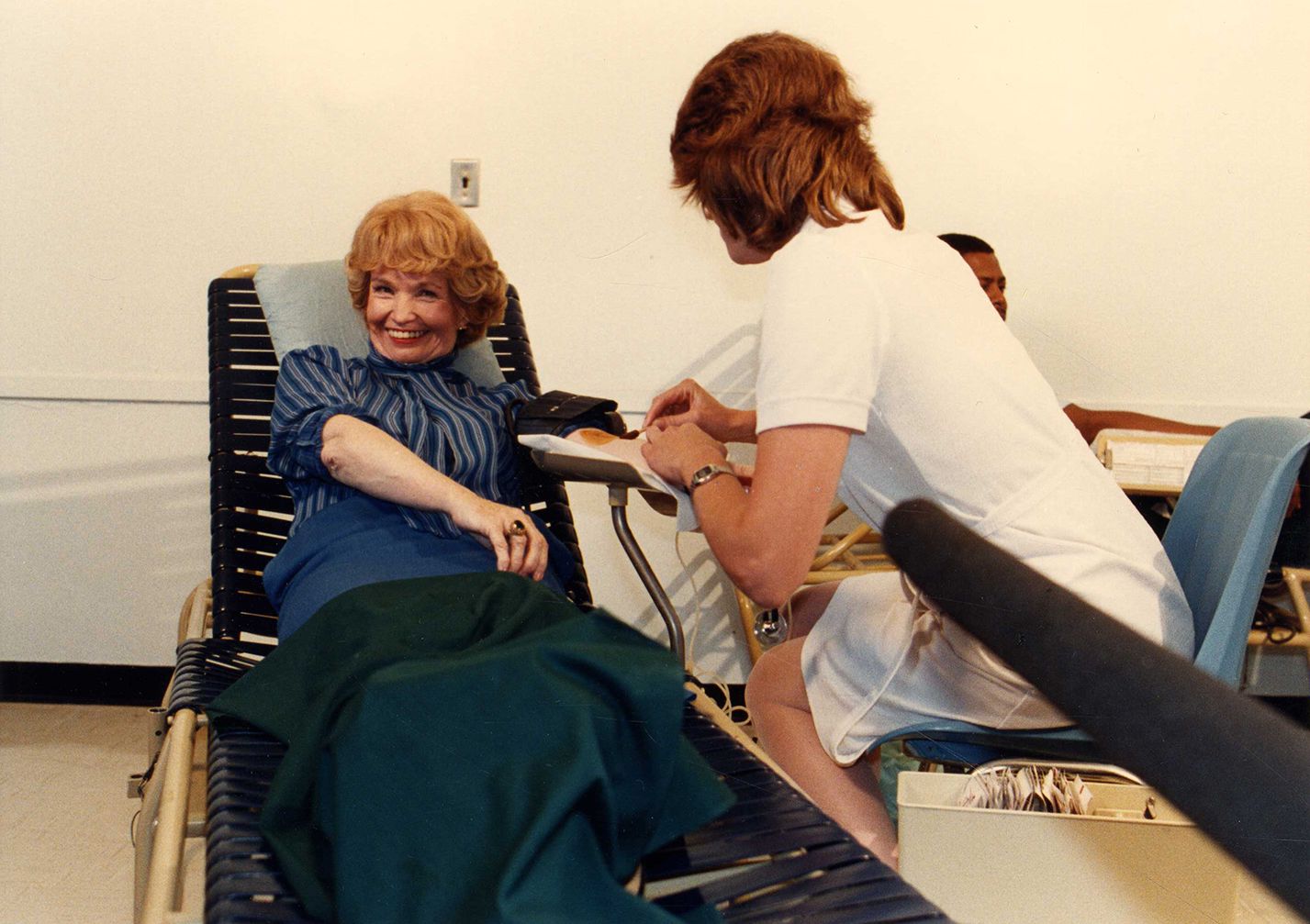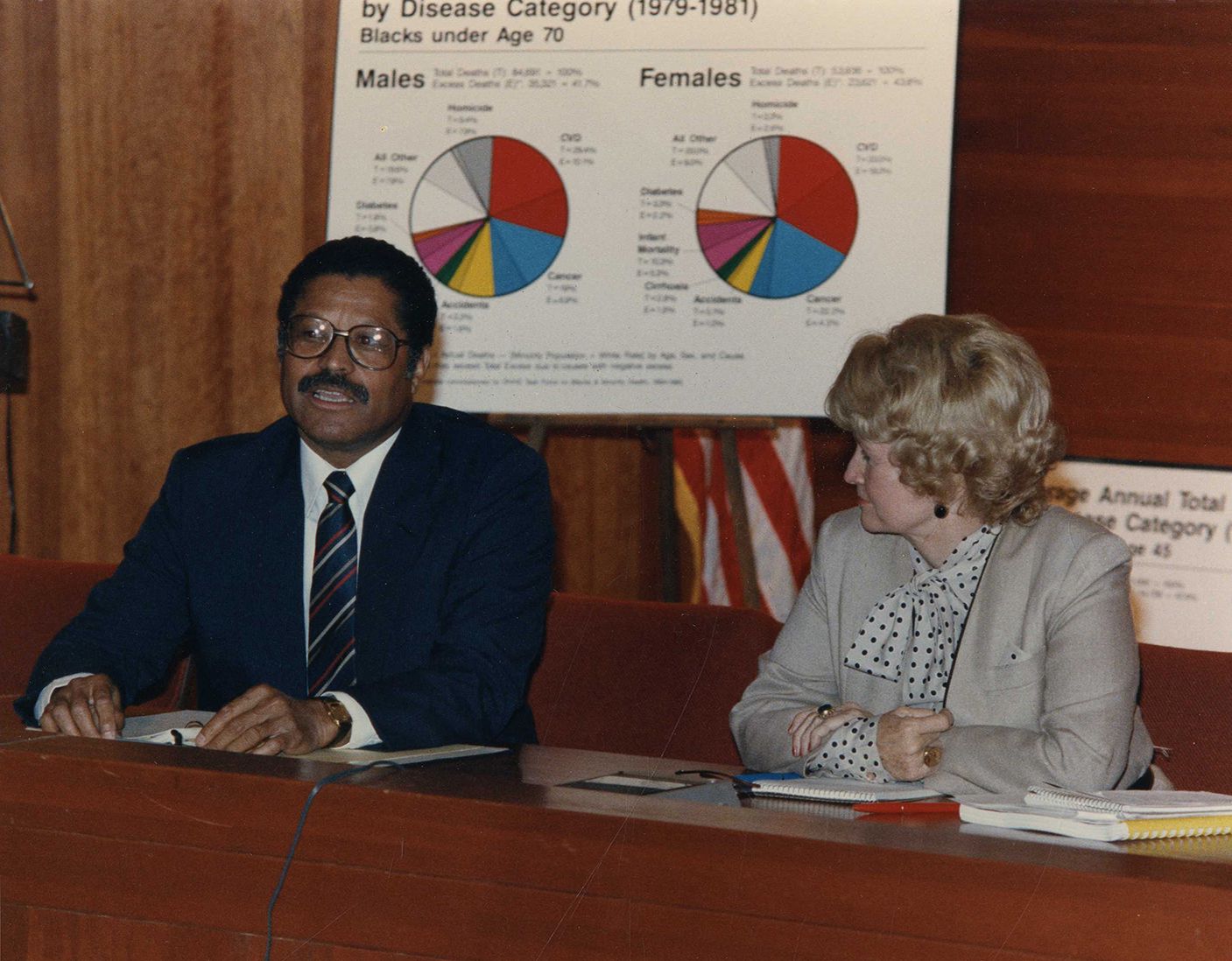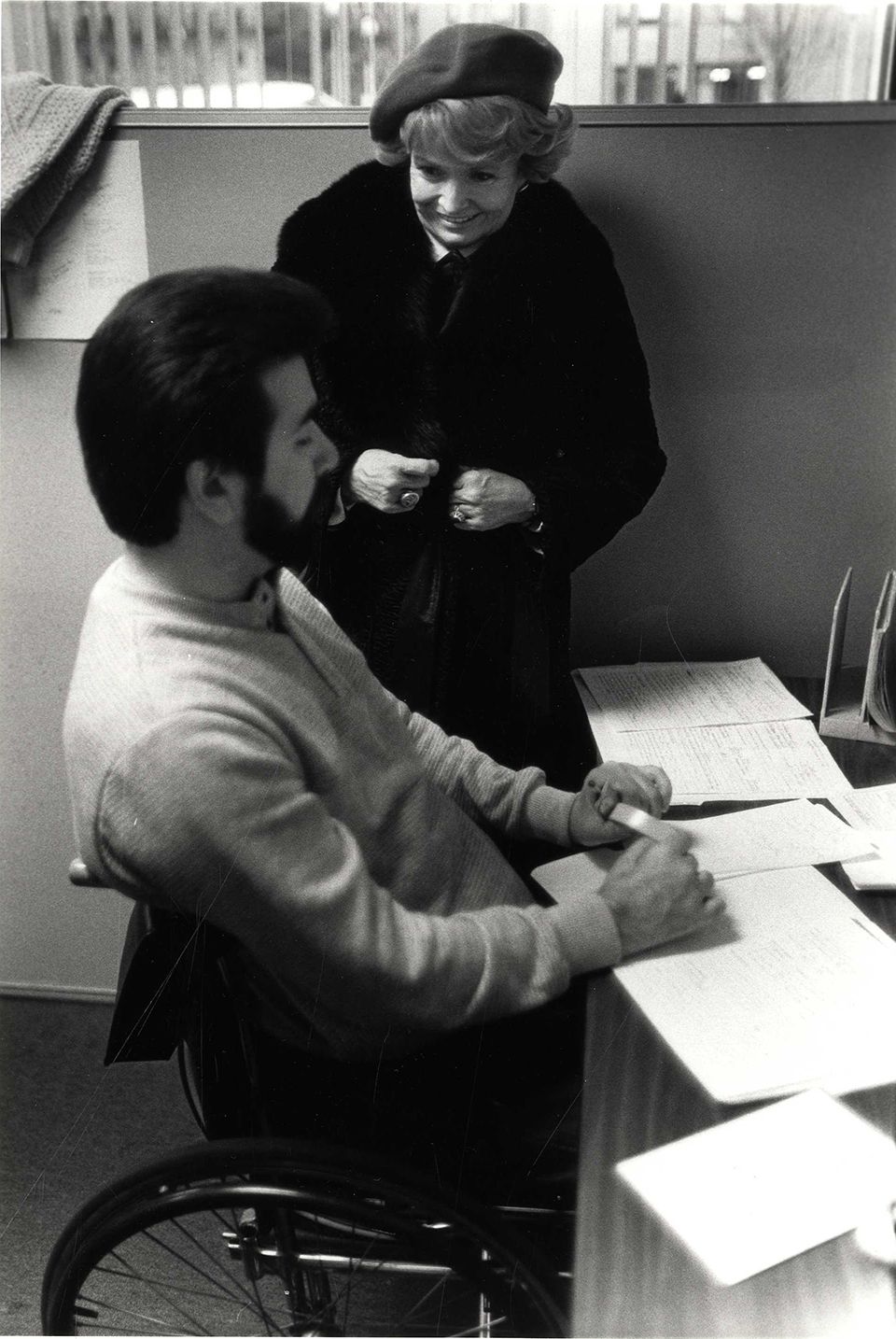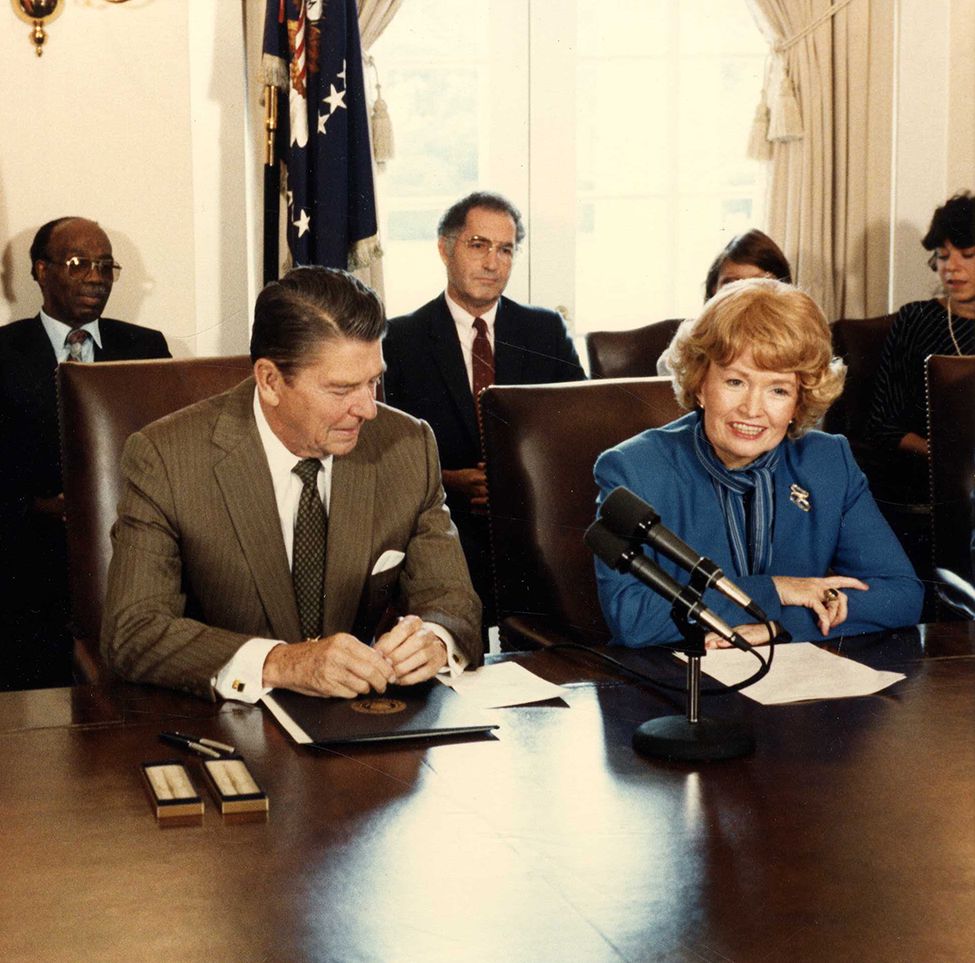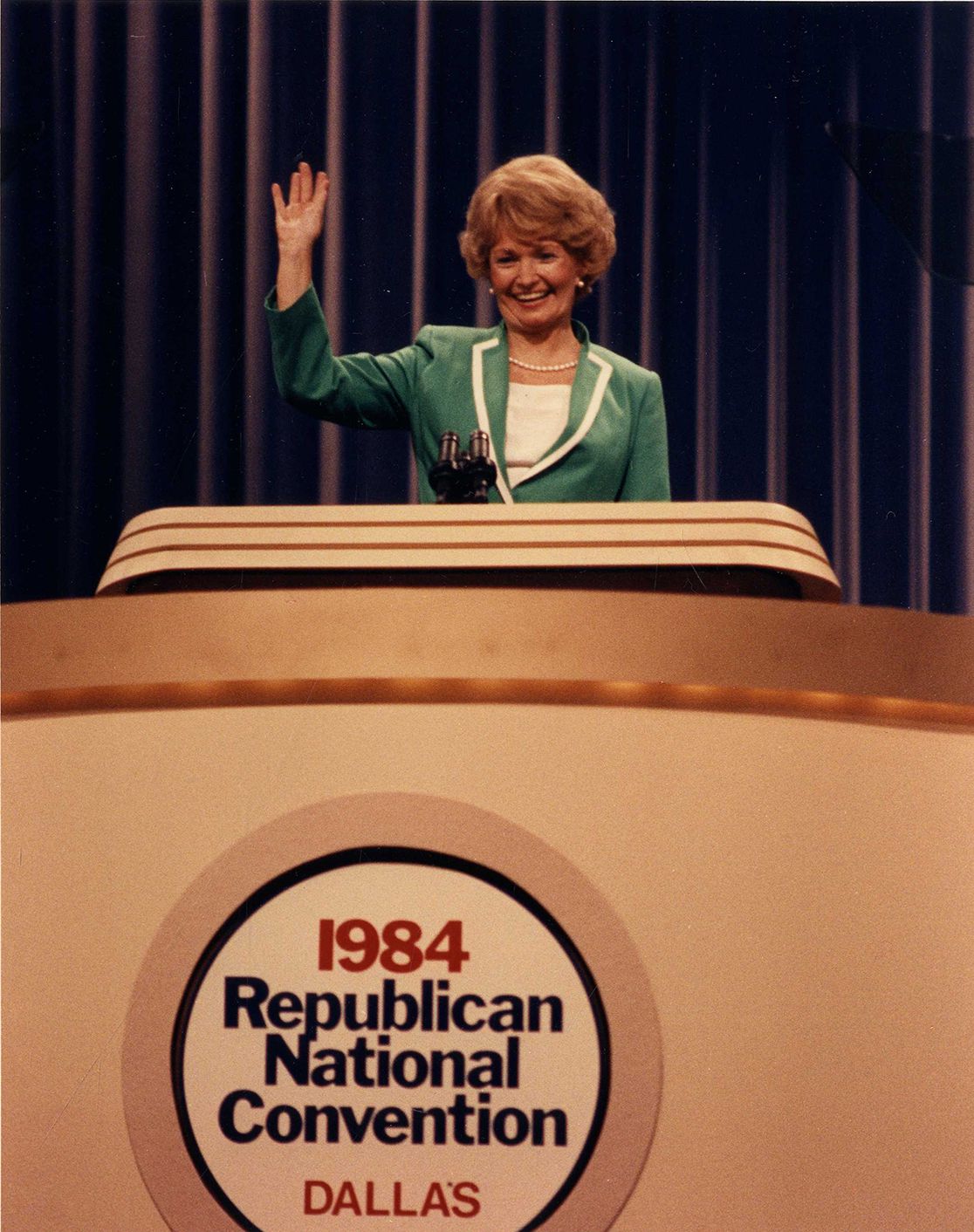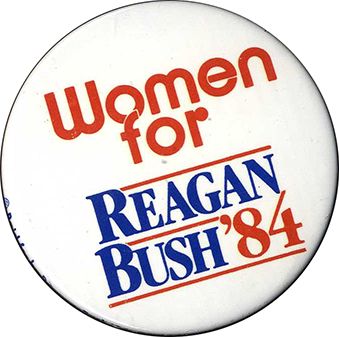Secretary of Health and Human Services: A 'Catalyst for Caring'
Shortly after her defeat in the 1982 election, President Ronald Reagan nominated Margaret Heckler to replace retiring Health and Human Services (HHS) Secretary Richard Schweiker. Her appointment was an attempt by the Reagan administration to fix the gender gap plaguing the Republican party: increasingly, women were turning away from the party and its policies in favor of Democratic candidates. Despite not having a background in medicine or public health, Heckler vowed to be a “catalyst for caring” at her Senate confirmation hearing. She was sworn in as HHS Secretary in March of 1983.
As Heckler quickly learned, the most pressing issue she faced at HHS was the AIDS epidemic. She named the epidemic as the department’s top priority, and directed the Centers for Disease Control and Prevention (CDC) and the National Institutes of Health (NIH) to use all available resources to study and combat the disease. Heckler has been criticized for not seeking more money to fight the disease, but she argued that more money wasn’t needed in the beginning. The expertise already existed within the department, and she was able to move funding from one program to another within HHS. One of Heckler’s priorities was to dispel myths about the disease. To that end, she visited AIDS patients, held their hands, and was photographed giving blood.
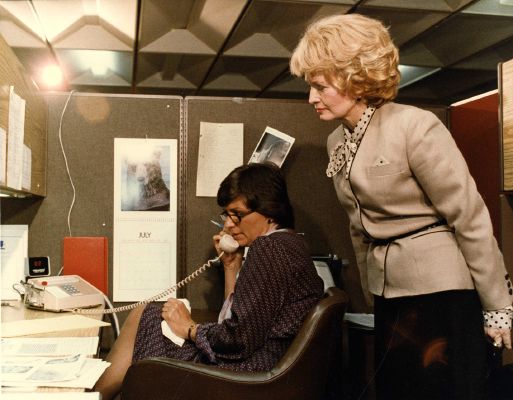
Margaret Heckler visiting an AIDS Hotline Center, 1983.
Box 128, Folder 15, Margaret Heckler papers, CA1998-004
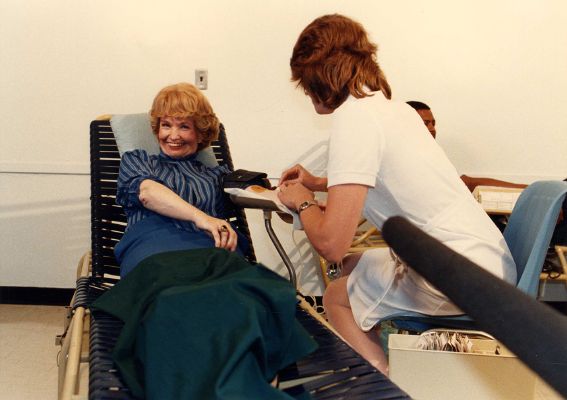
Margaret Heckler giving blood, circa 1983-1985.
Box 128, Folder 36, Margaret Heckler papers, CA1998-004

Task Force on Black and Minority Health meeting, 1985.
Box 119, Folder 7, Margaret Heckler papers, CA1998-004
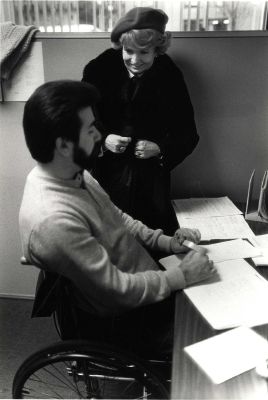
Margaret Heckler visiting the Boston Center for Independent Living, December, 1983.
Box 128, Folder 24, Margaret Heckler papers, CA1998-004
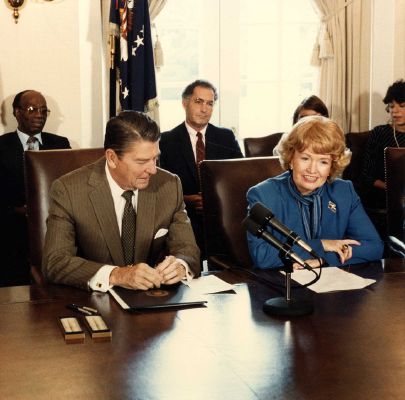
Heckler with President Reagan at the bill signing for the Child Support Enforcement Amendments of 1984, August 16, 1984.
Box 128, Folder 28, Margaret Heckler papers, CA1998-004
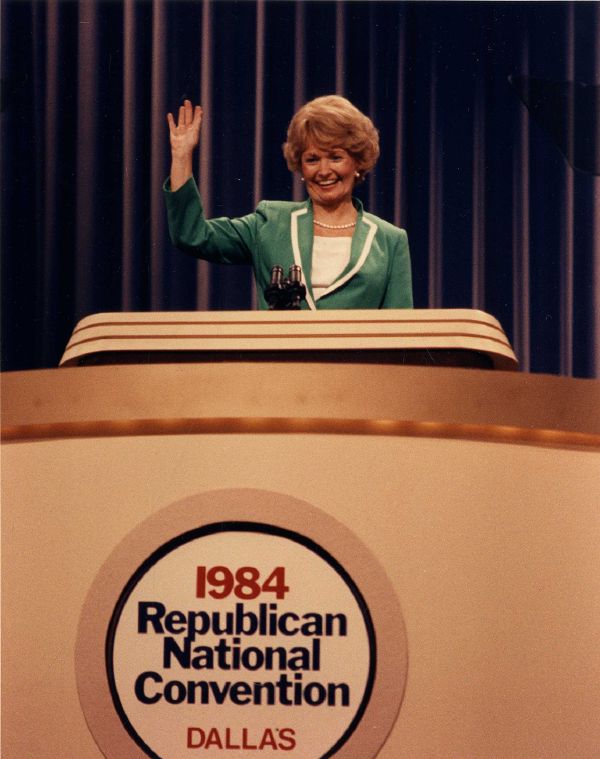
Margaret Heckler at the podium at the Republican National Convention, August, 1984.
Box 128, Folder 93, Margaret Heckler papers, CA1998-004
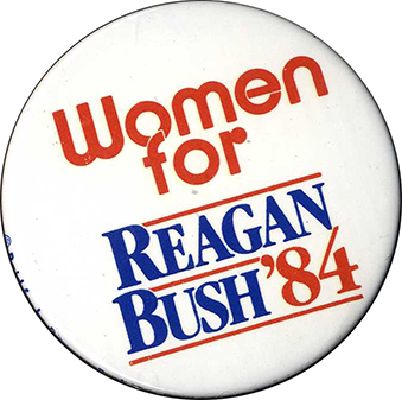
Women for Reagan-Bush ‘84 campaign button.
Box 184, Object 15, Margaret Heckler papers, CA1998-004

Margaret Heckler with George and Barbara Bush at the Republican National Convention, August, 1984.
Box 128, Folder 94, Margaret Heckler papers, CA1998-004)
By late 1985, Heckler faced criticism from some White House aides and officials who felt she was mismanaging HHS and was not strongly committed to the conservative Republican values Reagan’s administration espoused. She avoided talk of her possible exit from HHS for a number of months, but in October Reagan asked her to give up her cabinet position and become Ambassador to Ireland. Even though Heckler was reluctant to leave her cabinet post, she eventually accepted Reagan’s offer. She was sworn in as ambassador in December, 1985.

